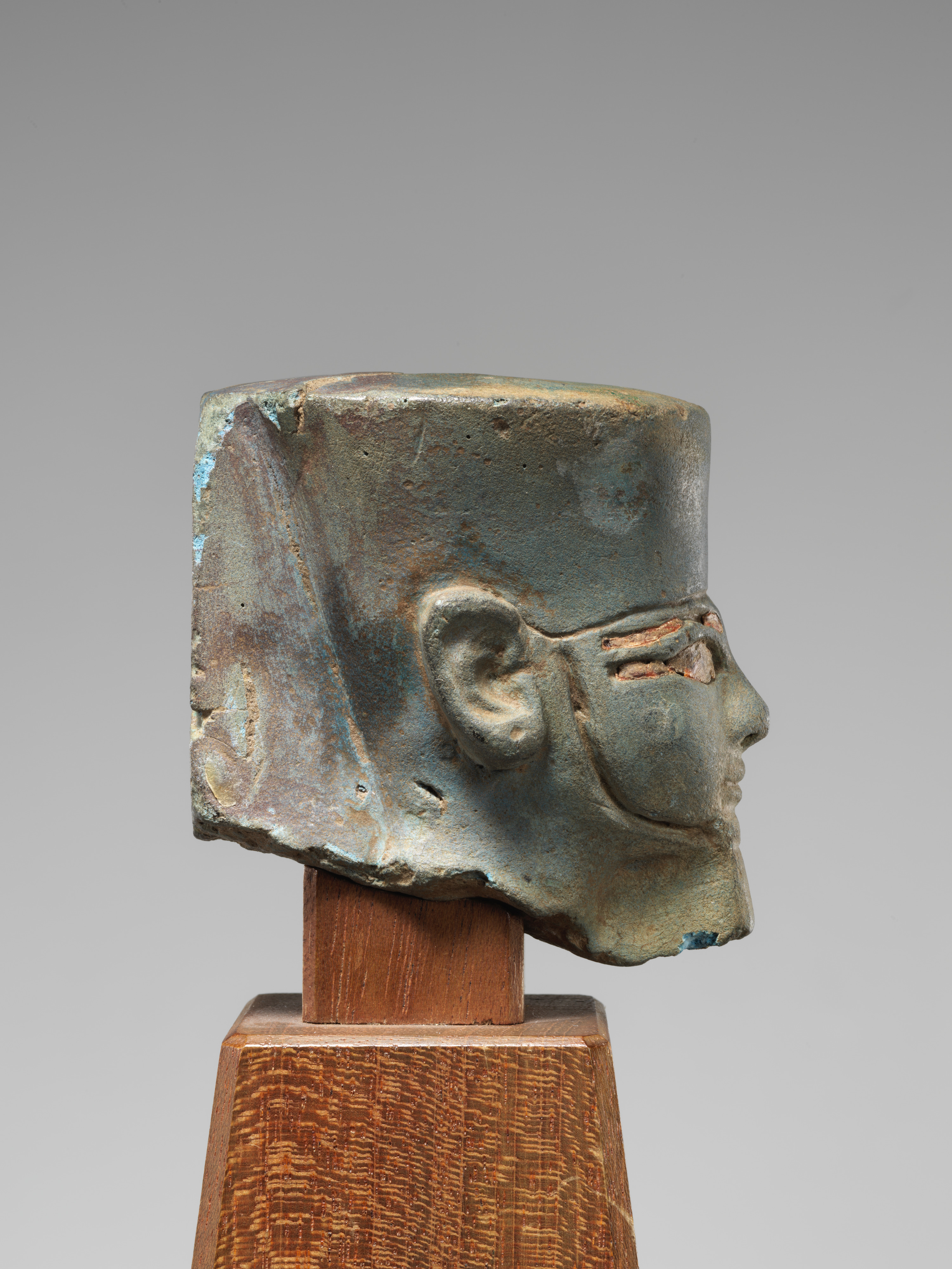Head of Amun with inlaid eyes
Third Intermediate Period
Egyptian blue was a synthetic pigment used most frequently to add color to objects composed of other materials, or for small objects such as scarabs. It was occasionally also used for larger objects, such as this small sculpture representing Amun, of which only the head remains.
The god Amun ("the hidden one") began to rise in importance early in the Middle Kingdom. He became more prominent over the course of the second millennium B.C., and beginning in the New Kingdom was seen as the king of the Egyptian pantheon. His cult continued to gain significance over the first millennium B.C. as well. Although his principal cult center was at Karnak in southern Egypt, he was worshipped at many sites throughout the Nile Valley.
Due to rights restrictions, this image cannot be enlarged, viewed at full screen, or downloaded.
This artwork is meant to be viewed from right to left. Scroll left to view more.



